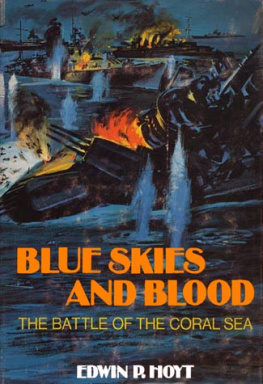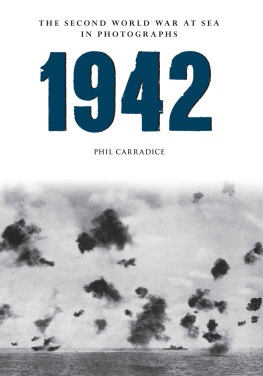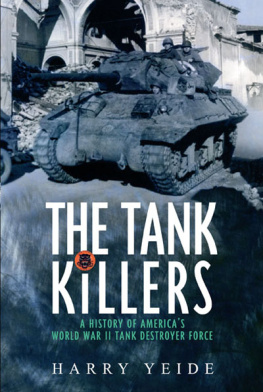A BLUE SEA OF BLOOD
DECIPHERING THE MYSTERIOUS
FATE OF THE USS EDSALL
D ONALD M. K EHN J R .

First published in 2008 by Zenith Press, an imprint of MBI Publishing Company, 400 First Avenue North, Suite 300, Minneapolis, MN 55401 USA.
Copyright 2008, 2010 by Donald M. Kehn Jr. Hardcover edition published in 2008. Digital edition 2010.
All rights reserved. With the exception of quoting brief passages for the purposes of review, no part of this publication may be reproduced without prior written permission from the Publisher. The information in this book is true and complete to the best of our knowledge.
Zenith Press titles are also available at discounts in bulk quantity for industrial or sales-promotional use. For details write to Special Sales Manager at MBI Publishing Company, 400 First Avenue North, Suite 300, Minneapolis, MN 55401 USA.
To find out more about our books, visit us online at www.zenithpress.com.
Digital edition: 978-1-61673-238-7
Hardcover edition: 978-0-7603-3353-2
Designer: Chris Fayers
Printed in the United States of America
Library of Congress Cataloging-in-Publication Data
Kehn, Donald M., 1953
A blue sea of blood : deciphering the mysterious fate of the USS Edsall / Donald M. Kehn Jr.
p. cm.
Includes bibliographical references and index. ISBN 978-0-7603-3353-2 (hbk.)
1. Edsall (Ship) 2. World War, 1939-1945Naval operations, American.
3. World War, 1939-1945Regimental historiesUnited States.
4. World War, 1939-1945CampaignsPacific Ocean. 5. World War, 1939-1945CampaignsIndian Ocean. 6. Shipwrecks--Indian Ocean. I. Title.
D774.E37K45 2008
940.545973dc22
2008034957
On the cover:
Top:Naval Historical Center Collections
Bottom: USS Edsall 1939 crew photo, taken at Shanghai. The skipper was Lt. Cmdr. A. C. J. Sabalot (second row center). His XO (on his left) was Lt. Cecil Caufield. The Nimitz Foundation
Spine: Detail of 1940 crew photo; at left is S2c Loren Stanford Myers, who survived the sinking of the Edsall. Jim Nix
On the back cover:Naval Historical Center Collections
In Loving Memory of Dortha Lou Wilson Kehn: A brave vessel
Contents
Prologue
A Ships Horn Sounds Farewell
Excitement of departure: sharp whistles, a hustle of stewards and passengers, the great gasps of the ships horn. Father would put Mother and me into our stateroom with my portable grammophone, our luggage and steamer rugs. At the last gong he would leave us on deck and stand on the pier waving us off to the brassy strains of Over the Bounding Main. Then, with the final blasts of the horn, the hawsers were released and I could feel the great ship pull free.
Robin Prising, Manila, Goodbye
A young, blond boy named Walter, his eyes crinkled against the fierce equatorial sun, sits perched upon brass railings that ring the liners upper deck. He looks out across the flat, glassy waters of an enormous bay crowded with shipping traffic. His sharp eyes drink in the bustling activity and the multitude of vessels: squat, powerful yard tugs; rust-flecked coastal boats; low, dark ammunition and stores lighters tied up alongside the warships; several four-stack destroyers and two big cruisers whose liberty boats carry clusters of white-clad sailors to and from the ports waterfront with its seven great piers. (Sometimes the sailors hold ice cream parties for the local youngsters aboard the cruiser Houston.)
A colorful miscellany of small craft putter amid stout oilers, tankers, and the dozen or so stranded ships from Dan Markor so it sounded to young Walterthat couldnt go home because the Germ-men had taken their country from them. In the blue distance, at Sangley Point off Cavites welter of cranes, masts, and smokestacks, beyond the breakwater, is the boxy silhouette of a submarine tender. Present also are gray military transports as well as gleaming commercial steamships and passenger liners, some with white eagles painted on their yellow funnels. And in addition to the little harbor ferry with its funny name, Dap-Dap, a pair of interisland vessels from the Dela Rama line shuttle back and forth from Manila to Iloilo with students, provincianos, coming to the capital to attend high school. Scattered among all of these are several U.S. submarines, as sleek and plump as steel porpoises. Vessels of many shapes and sizes are ablaze under a cloud-speckled sky.
One of them is Walters fathers ship, but the boy, no more and no less recalcitrant than any ten-year-old, has deliberately disobeyed his fathers strict military instructions: No sitting on the fence. And when his father catches him doing precisely what he has been told not to do, a brisk spanking is administered as punishment, after which he is banished to his room. Young Walter is furious, and with his pride as injured as his backside, he sulks in the familys cabin, refusing to come out again in spite of his mothers pleading. He may or may not have wondered at the length of time his mother spent talking to his father that afternoon, or the brevity of his dads temper. Or he may have resented the attention that his younger sibling, Robert, was getting that day.
They all seemed to have done more talking than usual, but the towheaded youngster was busy with the preoccupations of childhood. And even if he did notice anything unusual, it didnt seem serious enough to keep him from provoking his fathers anger, though this, too, may have been a childs way of gaining the attention he felt he was otherwise missing. It would not have been the first time a child had chosen a paddling over no attention at all from a father preoccupied by his job.
Later, when his father relents and comes at last to say goodbye, Walter obstinately refuses to see him. After the ships whistle had blown three times announcing its departure, the father could not come back. The youngster does not see or speak with his father again that day or, for that matter, any other day. This final parting would haunt Walter Nix for the remainder of his life.
Walters father was indeed a professional military man, a career naval officer, bound by duty. And though the family had grown used to such separations, they did not want to believe that this one would be any different. Still, they must have known otherwise. A new admiral was sending home all navy dependents without exception. A brief rebellion by resentful wives and family members was quashed by threatening to indefinitely confine their spouses to their ships without leave.
Yes, it was very different, and Walters father, Joshua James Nix, would soon be ordered to serve in the most mortal of circumstances in one of the worlds deadliest theaters. He was a lieutenant then assigned to the veteran Asiatic Fleet destroyer USS Edsall (DD-219). He would serve as executive officer for almost a year before being given command of that venerable flushdecker some eight weeks prior to the attacks on Pearl Harbor. Less than ninety days later, the old destroyer would vanish completely, with Joshua James Nix and his entire crew passing into oblivion; for decades they would be little more than a confused footnote.
Although Walter Nix, then a U.S. Navy captain and the assistant defense attach in Tokyo, would himself be introduced to Showa Tenno (Hirohito) four decades later, he passed away in 1999 knowing far less about his fathers death than he should have. Through his Japanese contacts, Walter had attempted to learn more about the mysterious end of







